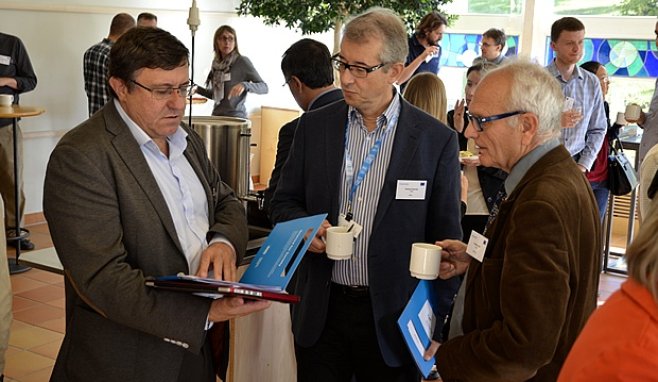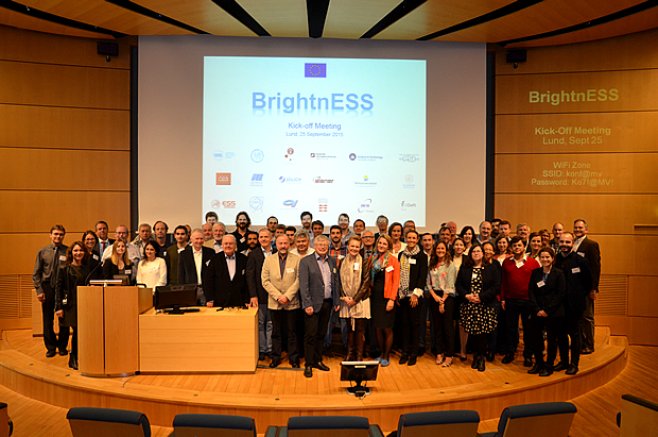Copyright 2012 neutronsources.org | All rights reserved. | Powered by FRM II | Imprint / Privacy Policy
BrightnESS Kick-Off Meeting Held in Lund
BrightnESS Begins. More than 70 representatives from the 18 participating institutions came together at the European Spallation Source on September 25 for the BrightnESS Kick-Off Meeting, which formally launched the EU-funded project.
Date: 10/11/2015
Source: https://europeanspallationsource.se/

LUND — On September 25 project participants gathered at the European Spallation Source (ESS) offices in Lund to launch BrightnESS, an EU-funded project to support the construction and development of a fully functional ESS facility.
The €20 million project, funded through the European Commission’s Horizon 2020 Research and Innovation framework, supports both scientific and non-scientific work packages designed to ensure the facility’s technical performance, coordinate the ESS In-Kind Contribution (IKC) model, and facilitate the impact of scientific research at ESS on European innovation. The project will last three years and includes 18 institutional partners from 11 European nations.
Work Packages Get Rolling
Click to visit the new BrightnESS project website.
The kick-off meeting successfully provided an opportunity for all partners to align on the main objectives of the project, to present their prospective contribution to the project, and to receive more information on the project management formalities.
“It was great to have everyone under the same roof, discussing our common goals and addressing head-on the specific challenges of individual work packages,” said Ute Gunsenheimer, Head of External Relations and EU Projects at ESS, and Co-Leader of BrightnESS Work Package 6.
A Stronger ESS Through a Broadening Collaboration
James Yeck, the Director General of ESS, welcomed the participants with an opening presentation that highlighted both the importance of neutron science generally and the critical need for a new neutron facility in Europe as existing sources approach maximum capacity. Yeck went on to update the gathering on the ESS project, schedule goals, and recently accomplished milestones, including the October 1 transition of the organisation to a European Research Infrastructure Consortium, or ERIC.

Yeck was followed on stage by Allen Weeks, Head of Communications, External Relations, and IKC Management at ESS, who stressed that constructing the most powerful spallation neutron source in the world will not, in itself, ensure maximum scientific or technological impact. BrightnESS, emphasised Weeks, will contribute to the deployment of knowledge from European companies and institutes for the construction and operation of ESS.
Following the introductory presentations, participants joined various break-out sessions relevant to their respective work packages with the aim to coordinate future cooperation among institutions and individuals.
“I think ESS will benefit greatly from the general exchange of knowledge and the directed collaboration across institutions that BrightnESS will facilitate,” explained Gunsenheimer. “BrightnESS will support the ESS project in very concrete ways, and in doing so will reinforce and expand the collaborative approach that has brought the project successfully into construction.”
